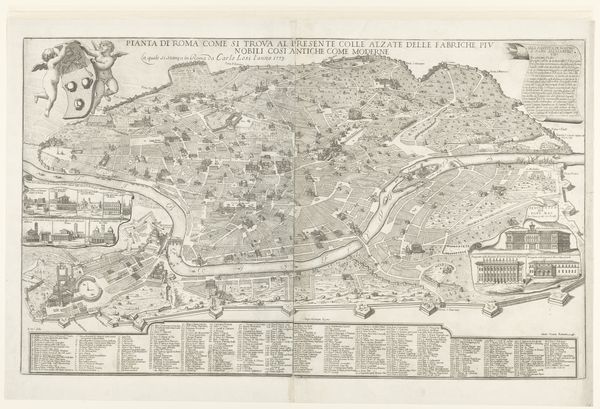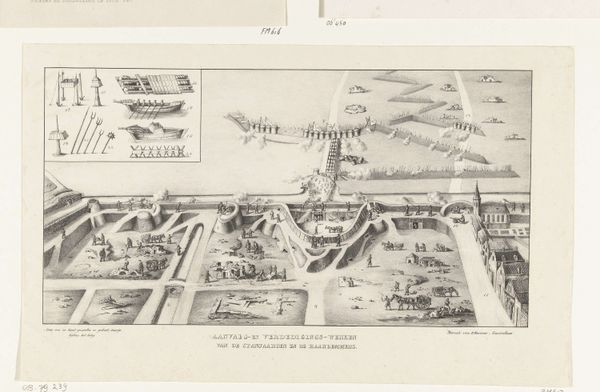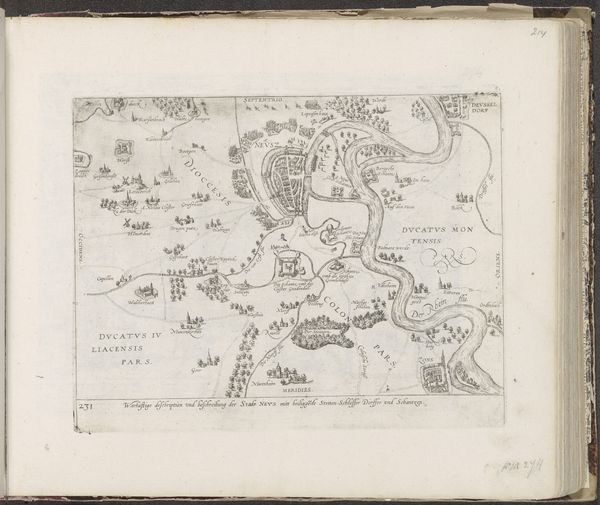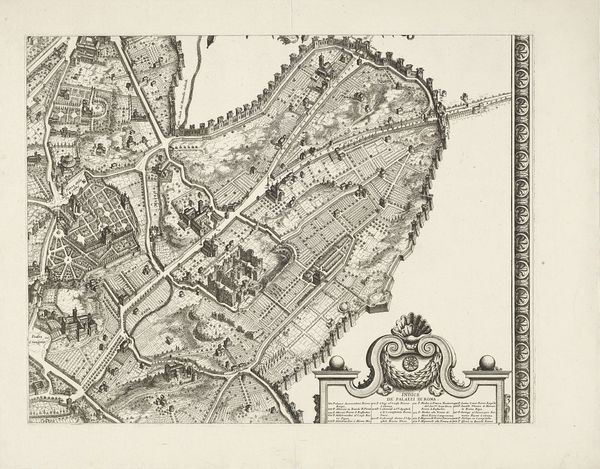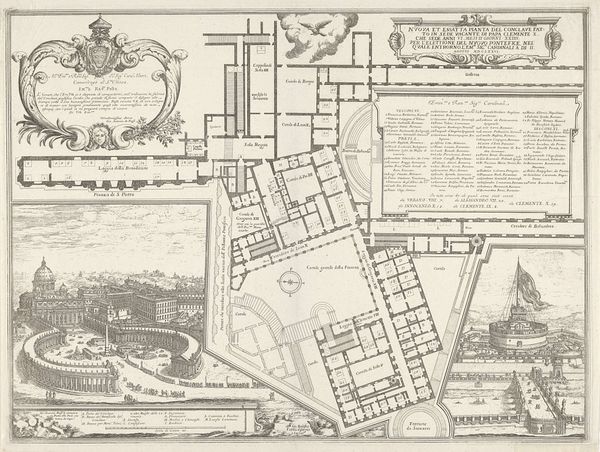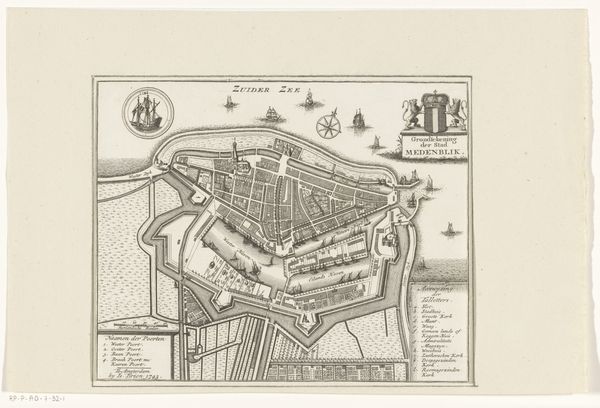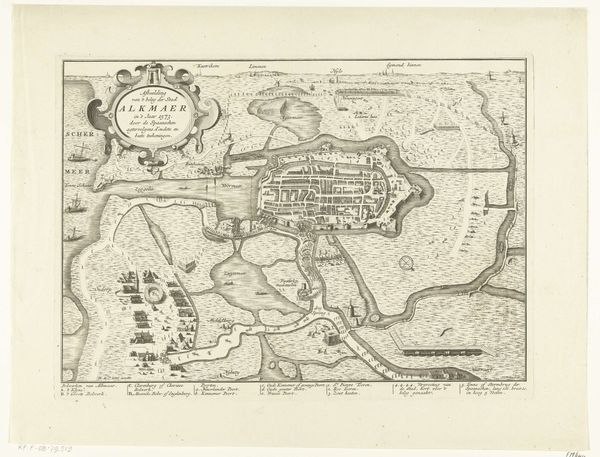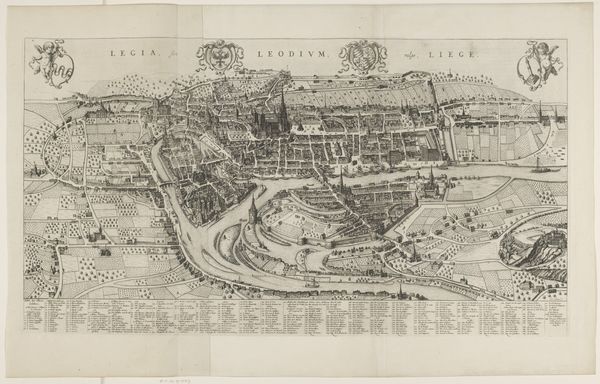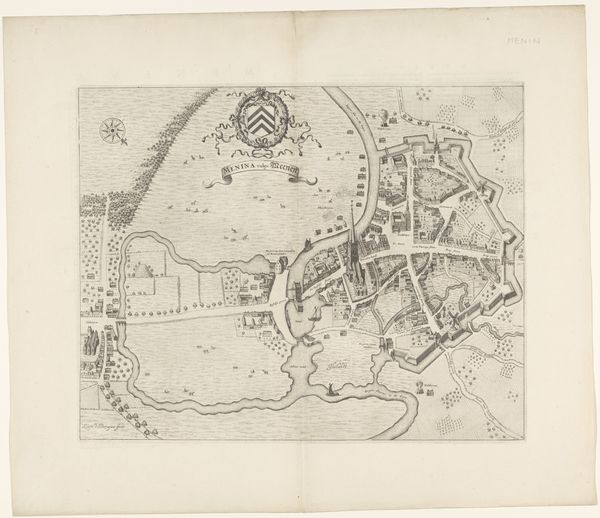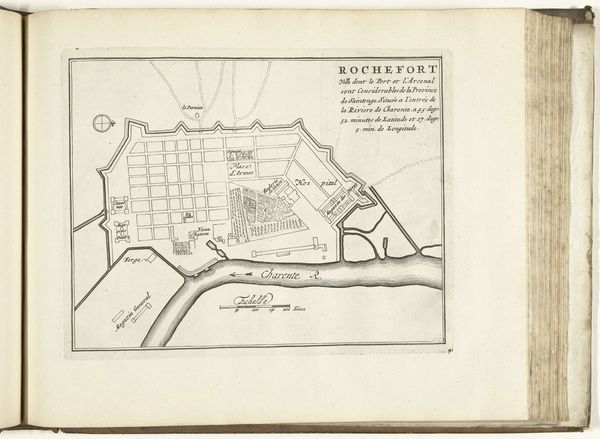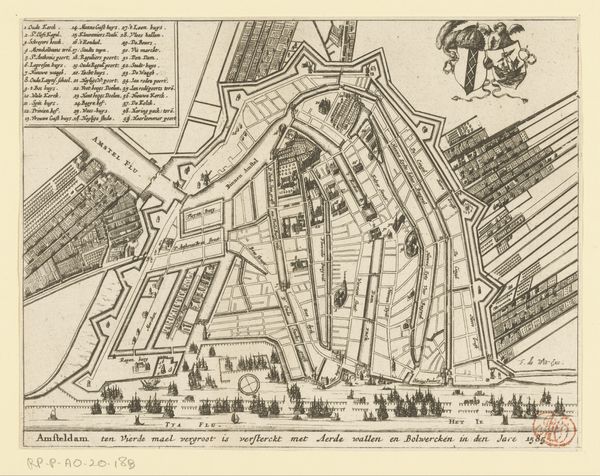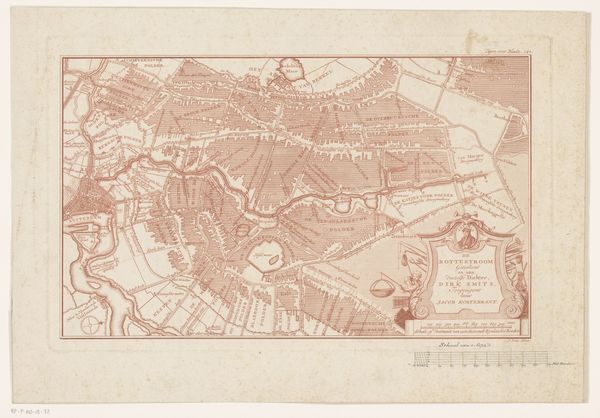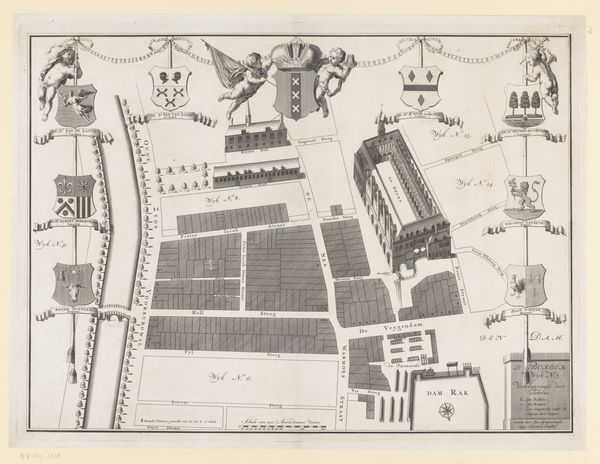
print, engraving
#
dutch-golden-age
# print
#
old engraving style
#
landscape
#
geometric
#
cityscape
#
engraving
Dimensions: height 362 mm, width 431 mm
Copyright: Rijks Museum: Open Domain
Editor: So this is "Swanenburg, Gemeenlandshuis van Rijnland" by Jan Matthysz, made in 1654. It's an engraving, a sort of bird's-eye view of a Dutch landscape. I find it quite intriguing how it mixes a realistic landscape with these almost geometric, diagram-like structures. What significance do you think this combination holds? Curator: The superimposition of landscape and geometric forms speaks volumes about the Dutch Golden Age. Do you notice how the map meticulously depicts waterways and land divisions? This isn't merely a geographical record. It signifies the Dutch Republic's obsession with control over nature, a visual manifestation of their engineering prowess and land reclamation projects. This act of shaping the land embodies their cultural ambition and resilience. What memories and symbols does this pursuit of control evoke for you? Editor: I guess I see it as ambition, but also a sort of... imposition? Like claiming dominance over nature. The precision feels almost sterile to me, removing some of the organic beauty. Curator: The 'sterility,' as you call it, carries potent symbolism. These gridded forms aren't merely practical; they represent order, reason, and prosperity - key values during this era. Remember that this was a time of burgeoning trade and scientific advancement in the Netherlands. The image, therefore, is deeply rooted in their worldview, showcasing what they valued most: control over their environment and their destiny. Do you see how that symbol set is conveyed in this landscape? Editor: Yes, now that you explain the cultural context, the geometry doesn’t feel so cold. It feels like an emblem of the culture’s priorities. Curator: Precisely. Symbols aren't just decorative; they're active agents in conveying meaning and preserving cultural memory. By studying how visual language evolved, we get glimpses into past societies’ innermost values. Editor: That’s a perspective I hadn’t considered before. Thanks, that’s helpful to know when I’m trying to understand older artworks.
Comments
No comments
Be the first to comment and join the conversation on the ultimate creative platform.
